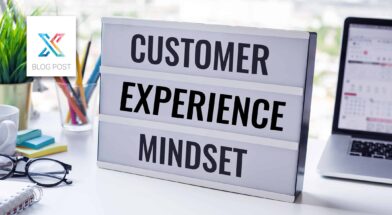The answer is yes.
According to Walker Information, 86% of buyers will pay more for a better experience. And, by 2020 Experience will overtake price and product as the key brand differentiator. With clients having more choices and louder voices than ever before, firms that want to outpace the competition and avoid commoditization need a Client Experience (CX) Strategy.
Impact of Change
Change. It is one of the few things we can count on in business as in life. And, chances are, you’ve experienced change at some point that was not something you would have chosen. What does change have to do with having a CX strategy?
Change is often the cause (or the result) of some business pain. We hear our clients talk about it all the time. There is the change of something increasing (competition for work and/or key staff), something decreasing (win rates, profitability), and/or the government is involved (new regulations for you or your clients). In professional services, these impacts can be detrimental to your firm’s growth, perception in the market, and overall survival.
Three benefits to having a CX Strategy
Is competition increasing in your market? If so, what’s the impact? Would you agree that increased competition puts downward pressure on client retention and win rates? As in every other business, technology offers clients increasing access to information and makes geolocation less important. Local and regional firms face increasing competition from national firms—and vice versa. Let’s not forget about the negative impacts from downward pressure on win rates! This lowers profitability, strains employees internally, and raises per acquisition costs for new clients. It cascades downhill from there.
One of the benefits of a CX strategy is that your firm becomes increasingly aware of the individual needs of each of your clients, including your key clients. This doesn’t mean you need a different project delivery process for each client. That would be inefficient, put unnecessary strain on your team and kill profitability. However, your CX strategy identifies places in your firm's project delivery process to focus on individual preferences, motivations, and needs.
One of our clients has been working on designing a “delightful” invoice. Sound crazy? The feedback we’ve received over the past decade suggests that client invoicing is a friction point in many firms. This client found that making a few small changes to the invoicing process made a significant difference to their clients’ perception not only of the invoice but of the firm for taking the time to make the change.
Is Business turnover high? Does your firm have a dedicated sales/business development team? In professional service firms, this role is often filled by “seller-doers.” The individual(s) responsible for bringing in the business are also charged with performing the services. (This is in varying degrees—more “eat what you kill” for attorneys and more collaborative for architecture/engineering.) Because many of your highly technical staff are often introverts who would rather “do the work,” it is often the extroverts that grow into the business development role with the threshold for their selection being “They aren’t bad with people.” What too often happens in this case is the client affinity is to the individual not to the firm. If a client-facing individual leaves, there is the risk they will take some or ALL of the business with them. Sound familiar? Turnover is inevitable, having a designed CX Strategy shifts the loyalty from the individual to the firm’s brand.
Is talent hard to find or retain? Research shows time and again that turnover is typically not money related. Far more often it is linked to your team member not feeling appreciated, not feeling the work they are doing is meaningful, or sometimes not understanding how their contribution fits into the firm's overall strategy. Do you have an employee incentive program to reward team members for bringing friends and colleagues to your firm? How is it working? If employees are constantly dealing with upset clients, they are not only more likely to leave the firm, they are less likely to refer a friend to an open position at the organization, even if they are incentivized. Employee Experience (EX), which is the subject of an upcoming article, is directly correlated with Client Experience (CX). When your firm is delivering a differentiated client experience, your clients will pay more for your services with many positive impacts to profitability. And, when your clients are happy, your team feels positively about their work and their work environment. They will help you recruit the top talent your firm wants and needs.
In the knowledge economy, services are increasingly commoditized. Expertise is assumed, and it is hard for less-educated/non-expert clients to know who is most expert. What’s left? Are you convenient, cheap, easy to work with (partly CX), and do I feel you really understand me and my needs (100% CX)? Client Experience is the answer to differentiating your firm and making you the one clients want to align themselves with.
CX Strategy Tip: Client Empathy Mapping (CEM) is a tool you can use with your team to better understand the questions, feelings, thoughts, and needs your clients experience as they work with (or consider working with) your firm. Here is a list of eight situations where CEM makes sense for your team:
- Kickstarting a Client Experience Program
- Pursuing a Major Project / Opportunity
- Entering a New Market
- Desire to Increase Share of Wallet with a Key Client
- Onboarding a New Client
- Hiring new Client-facing Staff / Leaders
- Increasing Concern of Competition
- Client Attrition
Learn more about how you can create a client Empathy Map as part of your CX Strategy.
Interested in launching or expanding a CX Strategy in your firm? Attend CXps 2018, May 21-23 in Durham, North Carolina. #CXps is where innovators and leaders responsible for designing and implementing CX strategies for their firms meet and get inspired to expand their CX Strategies.





